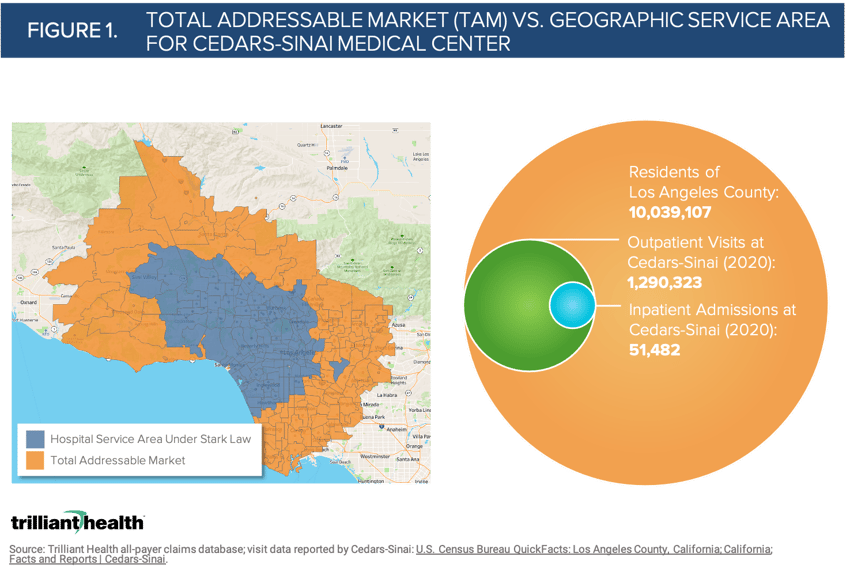The Compass
Hal Andrews | August 1, 2021The Unintended Consequences of the Stark Law on Health System Strategy
Most health system executives, and all health system attorneys, understand the importance of compliance with the Stark Law.
What most C-suite executives fail to realize is the pernicious effect of a law about physician compensation on strategic planning. The late Michael Sachs skillfully leveraged the Stark Law definition of a “market" into a franchise, creating a model of demand whose key variable was a list of ZIP Codes applied to a constant of national demand. I know, because I bought that report from HCIA-Sachs/Solucient/Truven dozens of times in the 1990s and early 2000s. Only later did I realize that I was buying the same answer every time.
The Stark Law states:
CFR § 411.357 Exceptions to the referral prohibition related to compensation arrangements.
(e)(2)(i) Geographic area served by the hospital - defined. The “geographic area served by the hospital” is the area composed of the lowest number of contiguous zip codes from which the hospital draws at least 75 percent of its inpatients. The geographic area served by the hospital may include one or more zip codes from which the hospital draws no inpatients, provided that such zip codes are entirely surrounded by zip codes in the geographic area described above from which the hospital draws at least 75 percent of its inpatients.
Of course, that is not how the rest of the economy creates strategic plans. Instead, they use this concept:
The Total Addressable Market (TAM), also referred to as total available market, is the overall revenue opportunity that is available to a product or service if 100% market share was achieved. It helps determine the level of effort and funding that a person or company should put into a new business line.
In practice, the difference is, pardon the pun, stark. As shown in the diagram below, Cedars-Sinai’s TAM is dramatically different than their market as calculated based on the Stark Law (Figure 1). A TAM-based approach in this scenario would expand Cedars-Sinai view to include more than 8.6 million patients.

A more grave concern is that the Stark Law defines markets based on inpatients. Much has changed since the Stark Law became law in 1990, especially the fact that inpatient admissions have been declining for years and most healthcare services are rendered in outpatient settings.
George Box, the noted British statistician, famously observed that "all models are wrong, but some are useful." A strategic plan based on a model derived from the fewest number of ZIP Codes representing 75% of your inpatients and a few random national trends is certainly wrong, and probably not that useful.
- Cost of Care
You are currently viewing a free preview of our premium studies. To receive new studies weekly, upgrade to Compass+ Professional.
Sign UpSee more with Compass+
You are currently viewing the free version of this study. To access the full study, subscribe to Compass+ Professional for $199 per year.
Sign Up for Compass+